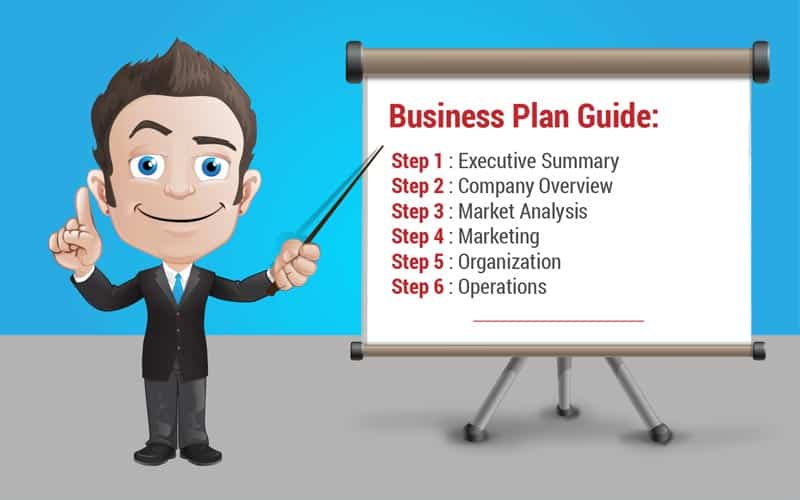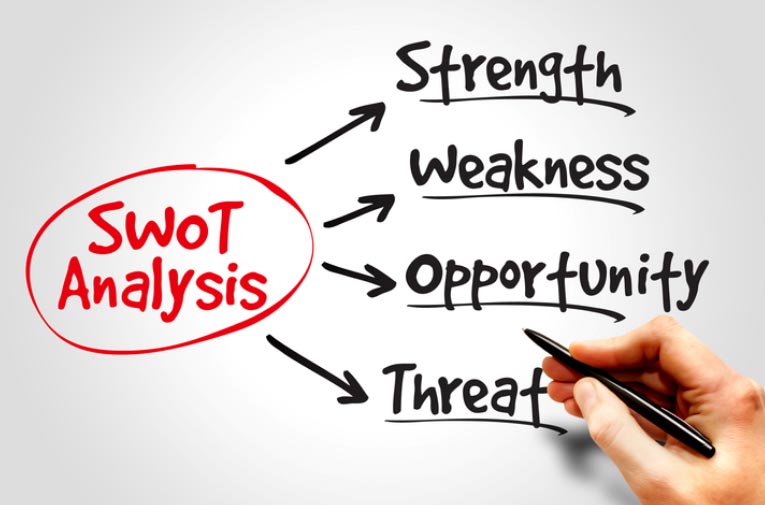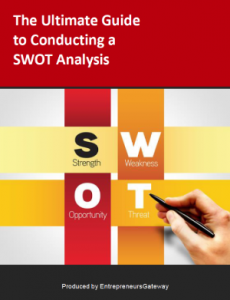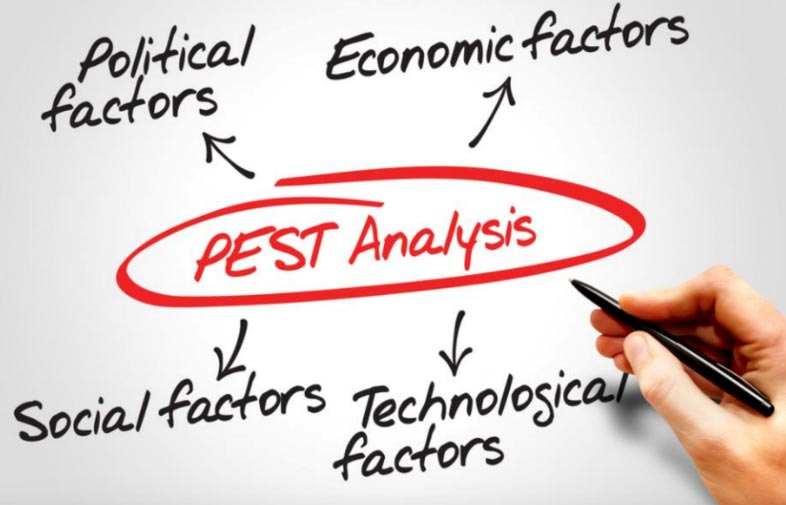How To Write a Business Plan... FAST
(Step by Step) Definitive Guide
Insanely Actionable Business Plan Tips That Are Sure To Impress!

#1 Writing a business plan that will impress
In this definitive Step-by-Step guide on writing a business plan, I’ll take you through all the stages of writing your plan.
We’ve looked at the different types of business plans and why a Business Plan is so important, so let’s look at the process of actually writing one!
Bottom Line:
If you are looking to achieve your goals and impress your readers…
Read on.

This article is part of the Business Planning Hub, where you’ll find lots of guides and resources to help you create the perfect business plan!
#2 Rules for writing a business plan
Before we start, here are some essential rules from the EntrepreneursGateway.com team to help you make the process easier and more efficient:
1. Be short and to the point
Your business plan should be short and to the point.
Why?
Firstly because… Well, you’ve gone to the trouble of writing it, so you want to make sure someone will actually read it! (And believe us, nobody will read a business plan that’s 100 pages long…)
Secondly, it’s a tool that you’ll continue to use for business growth, something that will be constantly updated. If it’s too long, refining it and updating it again and again is going to be hard work.
2. Understand your audience
Make sure you write your business plan in a tone and language that your audience understands.
For example, say your business develops software. Your potential investors aren’t software experts (and won’t understand the software terminology that you may well use in everyday situations), so make sure to accommodate your readers.
Keep your product/service explanations simple, so that everyone will be able to understand.
3. Don’t feel intimidated
Most entrepreneurs and business owners are not business experts and don’t have degrees. They are learning along the way, just as you are.
Writing your business plan can seem a steep climb, but it doesn’t need to be. If you’re passionate and believe in your business, it will not be as much of a challenge as you think.
If you want to start off with an easier and simpler business plan, why not try our Lean Plan? You can always write a more detailed business plan at a later time.
Click on the download button below to download our FREE Lean Business Plan template.

Step by Step!
Let’s now look at all the steps necessary to write the perfect Business Plan.
Remember:
As the saying goes, a journey of a thousand miles begins with a single step.
We’ll walk you through all the stages, so don’t be intimidated and just give it a try!
You can always refine your plan later.
Ready? Strap yourself in.
Step by Step
Let’s now look at all the steps necessary to write the perfect Business Plan.
Remember:
As the saying goes, a journey of a thousand miles begins with a single step.
We’ll walk you through all the stages, so don’t be intimidated and just give it a try!
You can always refine your plan later.
Ready? Strap yourself in.
Write your #businessplan in a tone and language that your audience understands. Check out the Ultimate #Business #Planning Guide
Step 1: The Executive Summary

What is it?
The Executive Summary is the most vital section of your business plan, because it could be the only section a busy business person reads.
It gives you the opportunity to say:
- What your business does
- How it does it
- Why it is the best at doing it
It is almost like a pitch – a platform where you can show why your business stands out from the rest.
You really want people to read it, so make sure it’s not particularly long! Make also sure the tone is appropriate and the language adopted is clear and pleasant.
Basically, you should do all you can not to discourage people from reading it.
From your Executive Summary, a reader should:
- Be able to understand what your business is about,
- Want to read the rest of the plan,
- Be convinced that investing both their time and money into it is a good idea.
Here’s a tip for you
Although it is placed at the beginning of a business plan, many entrepreneurs choose to write the Executive Summary last, after everything else is finished.
Why?
Because the aim is to highlight the strengths of the overall plan – which you should already be very clear about. By writing it last, you will already have clarity about your business, and will be able to do this very quickly and straightforwardly.
Basically, the Executive Summary gives an overview of the business.
How to write it
The first paragraph should include:
- Business’s name
- Location
- What the product/service is
- What the purpose of the plan is.
As for the rest of the summary, businesses at various stages will require different components.
For example, new or start-up businesses might not need as many details as an established business. The angle to focus on in that case is what ideas or decisions led to the start-up or that particular type of business, what experience the team has, and what research has been done to ensure that it is a sound investment.
You need to provide evidence that a thorough Market Analysis has been done, highlighting a need or niche in the market and how the business can fill it.
At a glance…
- The Executive Summary is the first thing to be read, but the last thing to be written.
- It can include whether or not a loan or investment is required.
- It should specify the amount needed and, in the case of an investment, it should include the percentage of equity ownership offered in return (the exact loan details need not be included).
- Businesses shopping around for Capital can use the Executive Summary to entice prospective investors and persuade them that it is something that they do not want to miss investing in.
- Different industries will include different things within their Executive Summaries.
Let’s look at some examples.
EXAMPLE 1: Cosmetic Business Plan
Who We Are
We are a business that sells Cosmetics – an exciting, innovative and affordable range of skin, body and hair care products to be launched in Angola, and then the rest of Africa.
A former Celebrity will be a director of the company and will be the face and name of the brand.
What We Sell
We will sell a wide range of products including shower gels, body lotions, shampoo, conditioners, hair lotions, soaps, and moisturizers.
We aim to establish these products first, and then to launch new products as the brand gains momentum.
These new products will include deodorants, toothpaste, women’s hygiene products, and also a baby care range.
Who We Sell To
Our target market will consist of the thriving and growing middle class in Angola, and we have plans to expand our operations to the rest of Africa.
EXAMPLE 2: Real Estate Business Plan
Executive Summary
Mickey Mouse has an exemplary track record and 35 years of experience in the golf and leisure industry – having recently retired from multi-million-pound golf and leisure homes complex ABC Golf & Country Club in Scotland, which became a part of the Disney Magic Group of companies in 2007.
The flagship of this company is the Shadow Creek Golf Club in Las Vegas. Mickey is now keen to begin his next independent venture.
Mickey was instrumental in the concept, development and success of ABC.
He now wants to take his experience and this proven business model and create a world-class golf venue with luxury leisure facilities and one, two, and three story holiday homes set within a stunning California location.
The proposed site is currently confidential, and Mickey is in the process of arranging initial meetings with the landowners to discuss his venture, as well as his vision for the use of the land.
The site details may be divulged to prospective investors, suppliers, and agents, but will otherwise remain confidential for the time-being.
The land itself is made up primarily of remediated quarry land and redundant woodland with natural undulations that span from 90ft above sea level to 30ft below sea level.
Infrastructure to and from the site is good by road, and also by air for patrons with their own helicopter, or those who want to fly in.
In other words, it is the perfect site on which to build a world-class golf and leisure complex, whilst also remaining sympathetic to the natural beauty and conservation of the area.
The Company
The company is currently in the startup phase. The Rose Hill venture will be a family-run business with Mickey Mouse and his daughter Minnie Mouse heading the management team.
Minnie Mouse was Park Manager at ABC Golf & Country Club, and also brings with her years of experience and expertise in the golf and leisure industry.
Our vision is to develop and nurture a family business that creates security and longevity for our family for many generations to come, and an exclusive and beautiful leisure facility for our clients and their families and friends to enjoy.
We are also passionate about creating jobs and opportunities for local people and building robust relationships with local and national suppliers and contractors.
What We Sell
Escape the stresses of modern life and indulge yourself at Rose Hill – the home of world-class golf and premium leisure facilities in the heart of North California.
Set amidst a stunning location within a 400-acre private estate, Rose Hill is widely considered to be one of the finest golf resorts in the USA, and indeed the world.
Rose Hill features 18 holes of unrivalled golfing, and exclusive, luxury facilities that simply cannot be found anywhere else in the country.
With its US PGA Specification greens and tees, tree-lined fairways, and stunning location, it is one of the most challenging, rewarding and beautiful golf courses in the USA today.
Exclusive luxury homes are scattered amongst lush gardens, giving the feeling of living in the middle of a nature reserve.
Our beautifully appointed hotel and spa offers outstanding facilities including luxury accommodation, fine dining and full spa facilities.
For the more adventurous, our lagoons and lakes offer a wide array of water-based activities.
Whilst there will be other facilities on site (and more are planned for the future), golf is the element that will predominantly attract people to the immaculately manicured complex.
Whether golfers or non-golfers, our clients will have the pleasure of being on a golf complex that they know is always going to be maintained in pristine condition all year round.
The proposed build time for the golf course will be two years. However, the holiday homes will be made available long before the golf course is open for play.
The natural beauty and stunning location of the site, as well as being able to see world-class golfing facilities being created first hand, will be enough to attract property sales from day one.
In addition to the golf course and luxury holiday homes, there will also be a hotel complex built on site, complete with club house, restaurant and spa facilities.
This will form the main socializing hub for the golf course and its members. However, we believe it is essential to maintain an air of exclusivity to the hotel and its facilities.
There is also the potential for inland watersports, equestrian and wildlife considerations on the site, but these elements will be addressed once the golf course, holiday homes and hotel are complete.
They can certainly be part of our marketing plan however and be listed as future developments to attract holiday home buyers.
We will look into designs for these areas so that we can present architect’s concept drawings as part of our holiday homes brochure.
Step 2: The Company Overview
This step outlines how to write a compelling and interesting company description, as well as what’s the appropriate content to include – such as your Market Analysis, services and products, and sales and marketing strategy.
Basically, the company description includes detailed information on what your business is about and what you are going to do in it.
Wondering how to go about it?
Let’s get started.

Research, research, research
First and foremost, you must learn about everything that is involved within your chosen industry. This includes the customers, along with the competition and all areas of the business.
How do you do this?
By conducting Market Research and Market Analysis.
If you are wondering what the difference between the two is, it’s very simple. Basically, Market Analysis tends to be more business strategy-oriented, whereas Market Research falls primarily into marketing.
The point for this step is the same:
You need to know your market in order to be competitive and learn about which products are in demand and which aren’t.
Starting up a business can be an extremely exciting, yet challenging, proposition. In order to succeed one must learn about their customers and competitors, as well as the economic conditions that apply to the chosen industry.
By conducting research, you will be able to gain valuable insights that can assist you in reducing business risks. In this way, you will be alerted to any upcoming problems within your chosen industry and will be able to identify sales opportunities.
Where to start with your research?
The internet is an obvious starting point – but also use third parties: Trade groups, business magazines, and academic institutions can show what is currently trending within the industry.
To help you in researching and analyzing your market, various sources are also available from the government. They provide useful information with reference to the customers and competitors.
Because your business can be influenced by international factors, it is important to understand its influences.
We’ll take a better look at this soon.


Organization and Management
Every business is structured and functions differently, so it is important to find out what management structure will be the most effective within your business.
One of the first decisions to make is what type of business to open. There are many different types available, and it is wise to explore the opportunities.
For example, you might want to opt for a home-based business or an online one.
Or maybe consideration could be given to buying a franchise – which could provide an opportunity for ready-made business success, but with a variety of challenges.
Service or Product Line

There are various areas that need to be completed in order to create a sound business plan. One of these is an overall description of the service or product.
You need to promote its benefits to potential customers and the reasons to why it will fill a need to its target customers.
But how to go about it?
- First and foremost, describe the product or service, outlining the specific benefits from a customer’s perspective.
- List the advantages that it has over its current competitors and how it is able to meet the customer’s needs along with how far in development stages it is.
- Include any existing, pending or anticipated patent filings or copyright. Any aspects of the product that could be classed as trade secrets should be outlined in this section.
To become a successful entrepreneur you need to be persuasive, creative & have a network of support available from a mentor….#EntrepreneursGateway.com
Sales and Marketing
It’s pretty obvious that, without customers, a business cannot be successful. This is why you need Marketing.
Marketing is how you get customers – and it should be unique to your company.
There is more than one way to go about a marketing strategy – but whatever you choose, remember: Your marketing strategy should remain an ongoing factor throughout the business evaluation process.

There are different strategies that can be applied to different businesses.
However, the four points below should always be included within the overall marketing strategy. Let’s see what they are.
- Growth strategy – Necessary for building and developing the business. Perhaps consider taking on a franchise strategy to allow the business to grow. Offering the same products to different users or at different levels of the distribution chain.
- Saturation – Looking at ways in which the market can be saturated with your company’s products.
- Distribution – This can include an internal sales force, distributors or retailers and the choices that have been made regarding these.
- Communication – How is advertising, public relations, brochures, etc. being used to create more customers?
After developing a comprehensive marketing strategy, one can begin to outline the sales strategy itself. This will include how the product will be sold.
Two primary elements that must be included in this are:
- A sales force strategy – If there is a sales force, how many salespersons will be in a team? How will they be recruited and trained and what compensation will be offered to them?
- Sales activities – Firstly, identify the prospects along with the contacts, then follow on by prioritizing (usually this means selecting the contacts with the highest buying potential first). Outline how many sales calls will be made over a selected period of time. This will then lead on to how many sales per phone need to be made along with the average pound per sale and customer.
Let’s look at some examples.
Example Company Overview: E-commerce Store:
Company Overview
This company is new and currently runs from a private residence but has secured a shop space-sharing opportunity for one year. At present, the owner covers multiple functions, but is looking to employ both a shop assistant and store manager in the future. There is an outside contractor working on designing the businesses website, and a company accountant has been employed.
Management Team
At present, there is only one member of the management team, but as the business grows, there are plans to employ a shop assistant and store manager.
The business is currently working with a designer to ensure that the website will be as marketable as possible.
Locations and Facilities
At present, the business is being set up from a private residence, but has secured a shop space-sharing opportunity running for one year: the address is: XXXX and is managed by a company specializing in storage, delivery, and return for eCommerce owners. They will be overseeing the deliveries and returns for the website.
Mission Statement
This should be kept short – one or two sentences at most – and it should encompass exactly what you are trying to achieve.
Tagline: Live, Love, Shop.
Mission Statement: This business’s vision is to become the ultimate destination for those who choose to cherish life and memories via the art of gift giving.
We want to convey the beauty of Asian culture to our customers and showcase its rich history in arts and crafts and provide products that are both elegant and individual.
The business’s mission is to ensure that our customers can approach any special occasion or event with minimum effort but maximum style.
Company History
The business is a start-up company which currently operates from a private residence. It embraces the best that Asian culture can offer; it is subtle but elegant, and most importantly unique.
With modern technology, along with globalization, Asian culture is becoming more welcomed and desirable.
Step 3: Market Analysis – Products and Services
In this section, you will learn:
- How to make a market analysis (which is basically a description of what your business is going to sell)
- How to do background research.
Ready? Let’s go.

The first thing you need to know is that a Market Analysis will illustrate your knowledge of both the industry and market – along with research, findings, and conclusions.
As we were saying before, the difference between Market Analysis and Market Research is that Market Research tends to be more business strategy-oriented, whereas Market Research falls primarily into marketing.
But you need both for your business. You need to research your market, figure out what you need to focus on for your business strategy and then work out a marketing plan as well.
- Selling a service involves selling time in order to do something for a customer, (examples are mechanics, plumbers, electricians, etc.)
- Products are objects such as clothes, books, shoes, etc.
Product and Services
Businesses can sell two things – services or products.
It is possible for a business to sell both, as in the example of a web designer: the service is the time to build the website and the product is the website.
When in doubt (and even when not in doubt), it is always a good idea to ask someone not involved in your business to read over your description. What is obvious to you may not be that obvious to a person who is not familiar with the product or service marketed, so you’ll gain valuable feedback.
To simplify – you need to:
- Ask yourself: What is your business going to sell? ls it a product, a service, or both?
- Give an outline of the product/service that will be sold. Sometimes pictures are easier to understand than words.
- Provide descriptions of the different types of product or service that will be offered. For example: if you are selling trousers, you may stock specific colors and sizes. If you are an electrician, two services might be available, one for commercial properties and one for domestic.
Industry Outlook and Target Market
Included in your Market Analysis should be a description of the industry outlook. Basically, you need to explain what the industry does, along with its current size, trends, characteristics, and historical growth rate.
You also need to focus on your target market. With “target market”, we refer to the customers that may be interested in buying the product/service.
The information about the target market should be specific and detailed, e.g. who are the local customers that would be using the product/service, rather than generalizing all customers in the world that could be interested.
If you have already sold products/services to customers, this is the best proof that they will be interested in your business.
This is also the case if you have customers lined up waiting to buy from your business.
Answer these questions:
- Are your customers businesses, individuals, or both?
- What is your typical customer? If they are individuals what age range are they in and how much are their earnings? For businesses, how big are they and what sector do they trade in?
- Where will the majority of your customers be based? Will they be in the UK or worldwide?
- What makes your customers buy the product/service? Do they buy when they have extra money available or when there is no other option (for example, a plumber attending to a leaky tap)?
- What factors determine whom a customer chooses to use or buy from? For example, do they choose the option nearest to them, a product that they think is in fashion, or a business that has been trading for a long period of time and is seen as being ‘experienced’?
- If products or services have been sold already, describe how much money was made along with how many sales. If possible, provide a list of sales/customer details.
- If there are customers waiting to buy from your business, ask them to write a ‘letter of intent’ (meaning that they want to buy your service/product). This can be included in the business plan.
Market Research

Unless proper research is carried out, it is impossible to know if a business will have the potential to succeed.
A business could look good on paper, but the real test is whether the product/service sells.
How to go about it?
Rather than researching the entire global market, it is advisable to look at the local market in the area that the business will be run.
This should provide an overview of what the market in your particular product/service looks like, how it behaves, and what customers will expect.
Let’s look at this in more detail.
There are two types of research:
- Desk
- Field.
Desk Research – This involves finding out basic facts and learning what other people’s ideas are about your chosen market. This research generally uses information from the internet and books. Points that should be explained are:
- The size of the market (how many sales go through each year)
- Any trends in the market, are sales going up or down? Are customers changing how they buy the product/service?
- Any important facts, events or statistics
- Is the specific market dependent on any external factors, such as weather or season?
Good resources to find out information are:
- General area statistics – upmystreet.com and businesslink.gov.uk
- Government agencies
- Libraries: directories, sector magazines.
- Any knowledge obtained from working in the field or via a previous job.
Field Research – This is the best way to establish if a business will be successful. It involves targeting potential customers and asking their opinion of your business.
Here are some ideas on how to do this.
Questionnaires
If it is a product that is being sold it is advisable to carry out test trading to see if people will actually buy the product and asking them to fill out a questionnaire.
Questionnaires can be overwhelming for a potential customer. To get the most useful and honest response, it is best to keep them short and simple.
Here are some tips on questionnaires.
- Ask questions that can be answered with ‘yes/no’ or ‘very happy, happy, unhappy’ etc.
- Don’t put any more than 10 questions on one page.
- Be specific. Will people buy from your business, at its location at the prices stated?
- If people are already buying from a similar business, which one is it? Would they be encouraged to buy from you and if so, why?
- Ask to keep their details so when you are trading, you can contact them.
Include a copy of the questionnaire in the business plan. Explain how many people completed the business plan and why they, in particular, were chosen.
Then summarize the results.
- How many people said they would but the service/product?
- How many would be new customers and how many potentially would be taken from the competitors?
Test Trading
To see if customers will actually buy your products and at what price, conducting ‘test trading’ can be beneficial.
Test trading enables you to practice running your business and doesn’t need to be expensive.
Points to be included in test trading are:
- How much it cost and where it was carried out
- How many products you tried to sell and at what cost
- What price and how many products were actually sold
- The main points that could be changed and what points were learned
When doing a Market Analysis, you should be able to answer the questions regarding your target market, their problems, and needs, together with the products you are planning to offer that could be their solution.
Let’s look at some examples.
Example Market Analysis: E-commerce Store:
The business offers products that represent the beauty of Asian culture. They capture the flavor of the Orient, are exotic, and will be remembered and treasured by the recipient.
The business will also offer a customization and product sourcing service. This enables customers to personalize their gifts, whether for themselves or their loved ones.
Additionally, a customer can contact them in advance to advise what they are looking for and whom the recipient is.
The company will then research the suitable gift that matches the requirement of the customer. This makes gift giving a far simpler and happier experience.
Some of the products that the business offers are:
- Orientally-themed jewelry
- Silk products
- Cloisonné accessories
- Cloisonné homeware
- Handmade ceramics
- Hand carved wood pieces
- Qipao dresses and embroidery
The company is also looking into selling art pieces created by current Chinese artists. The aim will be to introduce their work to more foreign customers and will increase the brand’s reputation.
This could be achieved by working with Auction Houses or by organizing exhibitions or art events.
Competitors
Currently, there are no high-street retailers offering similar products to those offered by this business. There are however websites that sell Oriental Products such as Alibaba and Gifts of the Orient.
Being of Chinese origin, this business has the upper hand with sourcing top manufacturers in China and sourcing products that will push the brand ahead of the local competition.


Product and Service Development
As mentioned previously, this business will offer a product sourcing and personalization service.
A website is currently under development which will detail all products that are currently available. As Social Media is crucial to business growth and brand image building, the business will use both Instagram and Facebook to attract new customers both online and offline.
When it becomes profitable, the business will introduce more Chinese art to the UK market by organizing social events such as auction or art exhibitions, whilst at the same time increasing brand recognition.
Sourcing and Fulfilment
At present, all the suppliers are based in China. Payment options will be available once the business establishes a regular and stable relationship with them.
As the ordering quantity increases, the rate of discount will too. As the value of GBP against the Chinese RMB is very weak, the currency used to purchase products is Chinese RMB, once the value increases it will revert back to GBP.
Technology
The business has registered a Xero account and will be using Shopify and PayPal to process payments both online as well as in store.
A company website is being developed where shoppers will be able to purchase goods online as well as offline.

Intellectual Property
The business is in the process of trademarking their business name and brand.
And here’s an Example Market Analysis for the hospitality trade:
Example Market Analysis for the hospitality trade:
Products and Services
The XX Inn is a family pub offering a warm welcome, a wide selection of beverages and an excellent menu. It is very popular with locals and has received very good reviews on TripAdvisor.
The wet list features Marston’s fine cask beers, wines, spirits, cocktails, soft drinks, and a coffee menu.
We would also be interested in adding more wines to the menu, perhaps featuring a wine of the month, or wines from a particular region each month to keep the menu interesting.
In addition to the usual pub fare, we would also look to introduce the following services and events:
- A lunch club once a week for elderly people within the region.
- A dedicated kid’s menu. We could offer discounted kid’s meals one afternoon a week to encourage parents to visit us with their children after school.
- A dedicated gluten-free menu. There were a few comments on TripAdvisor about there not having a good gluten-free selection. This is becoming more important to clientele.
- More theme nights, such as steak & wine nights. We would also look into doing beer & cheese nights. This is something that has just started to take off and would be a great way to introduce people to the cask beers on offer, alongside local cheeses.
- Events such as coffee mornings welcoming people from the community, especially new people looking for a place to meet with locals or get to know us better.
Adding or updating fruit machines and a jukebox. Increase food service hours, and perhaps look into serving a small breakfast
Competitors
There are a number of pubs in the region we would be competing directly with. Some of the most popular pubs in the area include The Devonshire Arms, The Alfred, Barton Turns Inn, and The Anglesey Arms.
These pubs have good reviews.
The Devonshire Arms is famed for its real ales and homemade pork pies. The Alfred is popular with sports crowds and offers good beer and a welcoming, busy atmosphere. Barton Turns Inn offers a good selection of beers and cheap homestyle food.
We want to be able to cater for more families looking for excellent food in a warm and welcoming atmosphere. We want to offer a busy and lively atmosphere in the evenings, and to attract locals and passing trade.
We also feel our dry menu offers so much more than other offerings in the local area, and we really want to focus on increasing profits in this area and to look into ways of attracting our customers and entice them to have a meal with us.
Product & Service Development
We would love to develop the products, services, and events on offer, and to do this in line with the Marston’s Code of Practice.
As the saying goes ‘if it isn’t broken don’t fix it,’ and so we would look at the aspects of the business that are working well, and only make improvements where necessary.
We also want to stay away from adding too many gimmicks as this can be a pub’s downfall.
We believe clientele like regular events, so they know what is happening and when – and this works very well with the Wetherspoon’s brand which offers Curry Clubs, Lunch Clubs and other options on set days of the week.
We also want to appeal more to families during the day. One idea we have is to add a marquee outside and to build a pizza oven so that we can hold kids’ pizza parties and other events outside.
Parents are always looking for something different for their kids to do, and this could be a very lucrative revenue stream for the pub. Parents may also stay to have a meal or drinks while the little ones enjoy the party.
We may also look into offering a set kid’s menu as seen in other establishments. Children could choose a main meal, dessert and a drink for around £4.95, and also be given coloring pencils and a picture to color in.
This not only keeps the kids entertained but also encourages adults to stay longer and purchase more items from wet and dry menus. We would also promote our birthday parties on the back of the coloring in page.
Sourcing and Fulfilment
All wet products will be sourced and supplied by Marston’s PLC. as per our agreement with the brewery. Equipment such as cellar cooling and drinks dispensers are maintained by Marston’s.
We would look to secure good deals for local produce for our dry menu and will leave this responsibility to our Head Chef.
Pathway and Lease Agreements are fully tied for all beers, ciders, stout, wines, spirits, soft drinks, packaged alcoholic drinks and gaming machines, including Amusement with Prize Machines (AWP), Skill with Prize Machines (SWP), pool tables and video/LCD based non-pay-out leisure machines.
Technology
Not applicable to this business
Intellectual Property
Not applicable to this business. The products we sell will already have the relevant trademarks and licenses in place.
SWOT Analysis and PEST Analysis
SWOT and PEST Analysis are two tools that can help enormously in your Market Analysis.
They are often linked, but their area of focus is very different.
- PEST analysis focuses on the ‘big picture’ factors that could influence a market, decision or potential new business.
- SWOT analysis examines these factors at a product-line, product level, and business basis.
Let’s see them in detail.
We’ll start with…
SWOT Analysis
SWOT stands for Strengths, Weaknesses, Opportunities, and Threats. It is a method that can be used in both a business or personal context.
Basically, it helps both a company or an individual identify their key strengths, along with what makes them unique – and how they can stand out from the rest. It also helps pinpoint any weaknesses or threats that could jeopardize the success of the business (which in turn makes them easier to manage or even eliminate), and reveal opportunities that can be used to their fullest.

SWOT is sometimes referred to as internal-external analysis, because generally the strengths and weaknesses are to be found within the business, whereas opportunities and threats mainly generate from outside factors.
How and why you should use it
You can use SWOT Analysis to “commence” a system plan or, in a more refined manner, as genuine procedure apparatus. You can likewise use it to get a comprehensive overview of your rivals which can give you the necessary knowledge to create a sound and effective, focused position.
When conducting your examination, be sensible and thorough. Apply it at the correct level and supplement it with as many option-generated tools as possible.
Where to start
It is important to be unique and stand out from the competition, so start by analyzing your competitors.
It is always useful to find out as much information about your competitors as possible.
To get a balanced overview, try doing it for at least five competitors.
What needs to be established is:
- Who they are
- Where they are
- How much they cost
- How big their company is
- What their main strengths and weaknesses are
Strengths
It is important to compare your business’s strengths with those of the competitors.
Strengths that should be considered are those of both customers and people involved within the market, as well as internal to the business (from people working in the company).
There are some simple questions that can help you identify and analyze a business’s strengths, such as:
- What does your company offer that others don’t?
- What makes your company stand out from the rest?
- What do people within your market area see as your strengths?
- How do you ensure that you ‘get the sale’?
- Are you able to draw upon unique or low-cost resources that other businesses can’t?
- What is the company’s unique selling proposition (USP?)
It’s very important to focus on your Unique Selling Point (USP).
In fact, your USP is what makes your business stand out from the others.
It could be different things – such as how you run your business, or it might relate specifically to the product/service. The main point is why customers stopped (or will stop) using a different business to become your customer.
Keep it simple and try to avoid clichés such as ‘better quality products,’ ‘better customer service’ or ‘cheaper products.’ Think about how you will convince customers that you are the better choice.
If you are unable to think of a USP, then it is advisable to go over the business plan again and improve it, so that there is something that will make you stand out from your competitors.

Example of Strengths
This is a popular pub in the heart of the community and is well established. It is especially well known for its excellent food and drink menus, and for its large garden during the summer months.
The exterior of the pub is attractive and welcoming and offers a clean and modern look and good curb appeal. There are also good parking facilities.
The pub is also known for its excellent staff and service, and this is apparent on TripAdvisor and other review sites. We would work hard to maintain this level of service, and to make improvements where possible.
Weaknesses
As before, both internal and external factors need to be considered.
Do other people perceive weaknesses in the company that you don’t? Compare yourself to the competition – are they doing better?
Being realistic and objective at this stage may prevent unpleasant surprises later on.
Questions to be considered are:
- What should be avoided?
- What could be improved?
- What do people in the market area, see as being your weaknesses?
- What is preventing the success of sales?
Example of Weaknesses
As with any business, there is always room for improvement. We feel there are a number of areas that we could work on immediately, and which would take minimal, focused effort to achieve and improve.
We would first turn our attention to the food menus, offering a good set price kid’s menu, and also gluten-free options on a separate menu. We would also review gluten-free food prep in the kitchen, ensuring we have a separate fryer for chips and other foods that need to be cooked separately.
Food service times are currently too short, and we feel the pub is missing out on profits during these times. The pub is currently closed on a Monday, and this is an entire day where the pub is missing out on local trade and trade from people visiting the area.
The patio area is not currently used to its full potential, and we would like to improve this area to make it more appealing and more suitable for a range of uses. Social media channels are not being updated.
The last Twitter update was almost six months ago, and this is a big area we would like to address. The website also needs attention.
Opportunities
These can be opportunities that both you and your competitors are able to take advantage of. An example could be changes in the law or market trends.
Useful opportunities can be:
- Changes in technology and markets on a broad and narrow scale
- Changes in social patterns, population profiles and lifestyle changes, etc.
- Local events
- Changes in government policy relating to your specific field.
Example of Opportunities
There are many opportunities for improvement. In addition to the improvements we have already listed, we would like to focus on seasonal opportunities such as Christmas, New Year and Mother’s Day and advertise these events and promotions well so that we achieve maximum cover in the restaurant and excellent profits from our wet menu.
There is a real opportunity for us to appeal to more groups of customers, and to open up new revenue streams. For example, our aim is to have at least one kid’s birthday party booked every weekend, and to have more parents popping with their kids after school.
There are also opportunities for us to improve our food menu, to make it more available during the week, and to publicize our menu and any special offers across our website and social media.
We also want to welcome our more elderly residents and give them somewhere to visit on a weekly or monthly basis, for a warm meal and a friendly atmosphere.
Threats
This could include changes in technology, government-related policies or even in social or lifestyle patterns.
- What threats could impact your business?
- What could you foresee as problems in the future running of the business?
- What is the competition doing that could impact your success rate?
- How would any changes in the quality standards or requirements of your job, products or services be affected, and would the ever-changing technology be an issue?
- Is/could cash flow be a problem or are there already debts outstanding?
How would any of the weaknesses previously identified affect the business?
Example of Threats
It is essential that we maintain the public house’s already excellent reputation, and that we make improvements carefully and in the right way.
One bad TripAdvisor review could be very damaging, and so we will do everything in our power to attract the best reviews and word of mouth recommendations.
Any failures in service will be dealt with immediately, and any poor reviews replied to and addressed in the best way possible, offering compensation where necessary.
We also need to ensure we keep an eye on our competition and what they are doing. Our tie-in with Marston’s is also critical to our operations, and so we would ensure that we work in accordance with the Code of Practice at all times.
Staff retention is extremely important to the establishment, especially in terms of more skilled staff such as the Head Chef.
We would ensure we offer an attractive remuneration package, and that we keep our team motivated to the point where they wouldn’t want to work anywhere else.
Basically, SWOT Analysis is a straightforward and helpful system for breaking down your association’s qualities and shortcomings, as well as the open doors and dangers that you confront.
It helps you concentrate on your qualities, limit dangers, and take the best conceivable preferred standpoint of chances accessible to you.
Click on the download button below to download our FREE SWOT Analysis template.

What about PEST Analysis?
PEST Analysis is a simple tool which helps analyze the Political, Economic, Social, and Technological changes in your business environment.

Four main reasons why PEST analysis is useful is:
- It can give advanced warnings of significant threats, as well as aiding business or personal opportunities.
- It shapes the way in which the business environment is moving, so rather than working against change you are working with it.
- It can help you avoid starting projects that may fail for reasons beyond your control.
- It helps develop, an objective view of new environments. This can be useful when entering a new country, region or market.
Let’s look at it in detail.
Here are some questions you can ask for each area:
Political Factors

- How could the government or regional policy be affected after the next general election?
- Who is most likely to be elected and what views do they hold on business and other policies that may affect your organization?
- Legislation or taxation changes that are currently pending could have a positive or negative effect on the business.
- How developed are the property rights in the country of business and is corruption and organized crime widely spread?
- Are there any trends towards regulation or deregulation?
- What measures do the government have in place regarding corporate policy, environmental issues and customer protection legislation?
- Is it likely that any political factors could change and if so what are they?
Economic Factors

- Is the current economy increasing, stagnating or decreasing?
- Do the key exchange rates vary considerably or do they remain stable?
- Will potential customers have more or less disposable income available?
- Will it be easy to build a workforce, or will skilled labor need to be hired?
- How easy is it for both consumers and businesses to access credit and what impact will this have on the business?
- Is the economic environment being affected by globalization?
Social Cultural Factors

- Will the population’s religious beliefs and lifestyle choices affect the business?
- Are there any social taboos or attitudes that could have an impact on the business?
- Is the job trend market growing or declining and do they vary within different age groups?
- What impact will the health, education and mobility levels of the society have and are they changing?
- Are the population’s growth rate and age profile steady or are they likely to change?
Technological Factors

Click on the download button below to download our FREE SWOT Analysis template.
- Are any new technologies coming into use in the near future and are there any on the current market that you could be using?
- Will your competitors have access to any new technology that may become available that could help redefine their products?
- Could you work from any existing technological hubs or learn anything from them?
- Could you take advantage of any of the areas that the government and educational institutes focus their research on?
- Should you be considering any other technological factors?
Step 4: The Marketing Strategy
This step focuses on:
- The relevance of a Marketing Strategy – not only for your business plan but also for running your business.
- Tried and tested strategies that could be applied to your own business.
Let’s take a look.

Contacting customers
Marketing is one of the main ways you are able to tell your customers about your business. Basically, it is the act of making contact with potential customers.
Good marketing material, in whatever form, is a sure way of grabbing a customer’s attention. It will capture their attention and interest, evoke a desire for your product/service, and direct them to take action and find out more.
Successful marketing means potential customers are aware of what your business does and where to find you.

Marketing Methods
There are various marketing methods; some are outlined below:
Word of mouth – This means customers hear about your business through others. Often, when customers have received good customer service or really like a product, they will recommend it of their own accord. It is worth considering how to encourage them to talk to others about your business, possibly by offering them an incentive such as a discount.
Advertising – There are many different ways that your business can be advertised. This could be in the local paper, on the internet, or in a directory such as the Yellow Pages.
What needs to be explained is:
- Why the specific methods have been chosen and how much costings will be.
- What the advert will look like, such as size and colors
- How long will each advert run for and how many will be used
Business Literature – This includes leaflets and business cards and should detail the most important details of your business only.
Often, simplicity is the best option: keep the design and wording clear and legible. If business cards have already been produced then attach them to the business plan. Alternatively, if they are not yet in production, describe the design and remember to include:
- Who will design the cards? What information will be included on them and what materials will be produced?
- How many will be produced and how much will the costings be?
- If materials are going to be distributed to customers, how and where will it be done?
Direct Marketing – This is the process of contacting potential customers directly, in order to sell the product/service to them.
This can be through a letter, email, face to face, or via the telephone.
In your plan you will need to include:
- How the names and details of the potential customers will be sourced
- Which method of contact will be used, why and at what cost

Social Media
There are many different social media sites, all of which can be extremely effective in marketing your business. It is free and enables you to put a stamp on your business as well as allowing potential customers to interact with your activities.
There are social networking sites that focus on small businesses as well as the widely used Facebook and Twitter.
Things to consider if you are thinking of using Social Media to market your business are:
- How will you engage with your customers? For example, will you create a blog to allow customers an inside view of how the business works, or maybe get customers to offer feedback on product design?
- What you actually wish to achieve from using social networking as a marketing tool?
- Which networking sites are the most used by the target market and for what purpose?
- How you will separate your personal and business activity within the social networking sites?
Tradeshows and exhibitions
Exhibiting can be quite costly and time-consuming, so you will need to weigh up the pros and cons.
Before attending an event, you should consider what others you will attend, how much it will cost and what benefit it will have on the business at this stage.


Website
The basic principle for a website is to show what you do and how you can be contacted. Do not make it complicated.
If a website is already up and running, include the web address in the plan; if you don’t have one set up but are planning to, explain the design and any special functionality features that may apply, such as an online shop.
Another important factor is who will design it and at what cost.
Example of a Marketing Strategy for an E-commerce Store:
Marketing
The ideal customers are those looking for something unique and special, along with those who are buying gifts but really have no idea where to start.
Although local gift shops and online gift retailers could be classed as competitors simply by being in the same retail category, this business is different as it offers bespoke and unique products.
Overall, the retail price will be marked up between 40-70% of the purchase cost. The marketing strategy to promote the business will be mainly Social Media, along with the possibility of advertising in local newspapers or magazines.
Initially, selling will be direct, but dependent on the speed of growth, selling through a third party to build customer client base could be an option, this could redirect them to the website and physical store.
Instagram is another marketing tool that the business aims to utilize, attracting customers both nationally and internationally by the use of well-captured photographs.
This will allow brand reputation to build. Customers who have shopped with the business will be invited to upload their photos on Instagram and, by using a specific hashtag, will enter them into a contest to win either cash vouchers to spend in store or a free gift.
The shopping experience is as important as the products for sale. The boutique will be decorated in an elegant but minimalistic style.
The overall theme will be Oriental. Watercolor paintings will adorn the walls along with handmade wood displays. When a customer enters the boutique, they should feel like they are entering an interesting side of the world. The products will be laid out clearly so as not to be overwhelming.
As the target group is women between the age of 25-55 years, the business plans to approach the local spas, hairdressers and beauty salons to ask permission for leaflets to be displayed, perhaps offering a discount to customers of the salons.
For more online incentives, an offer such as ‘refer a friend’ could be considered. If successfully referred, both customers and their friends could enjoy a 10% discount.
All client details will be stored online allowing the business to track their shopping behaviors by seeing what they like and click on the most. Search engine optimization is also something the company will utilize to promote themselves.
Step 5: Organization and Management
This step covers the structure of the company.
It should have details about the ownership, including profiles of the management team and the board director’s qualifications.
Although business plan outlines are variable, usually this step follows the Market Analysis.
It is important to include:

- A general summary of the employees and directors, explaining why they are being brought into the business, what experience and background they have and what their responsibilities will be.
- Salaries and benefit packages, including any incentives and promotions. The easiest way to illustrate these points is by creating an organizational chart with a narrative description. This demonstrates that every area is covered, and nothing is left to chance.
- The legal structure of the company. To explain the legal structure of the company, answer these questions:
- Is it incorporated, and if so, is it a C or S corporation?
- If it is a partnership, is it a general or a limited one?
- Or are you a sole proprietor?
- Ownership information, such us
- The names of the owners along with the percentage owned
- What form the ownership takes (e.g., preferred stock, common stock, limited partner)
- What involvement the owners will have within the company
It is also beneficial to provide:
- Management profiles for the team. These could include what experience/skills they have, previous positions held, education and training and what role they will be fulfilling within the company.
- A board of directors. There are major benefits in having a board of directors, as it can provide expertise at no cost. Having a list of successful and well-known business owners/managers on board will enhance the company’s portfolio tenfold. For your board of directors, you will need to include the same information you included for the team members – such as names, positions within the board, background (experience and skill), the exact involvement with the company, and what historical and future input they will have within the business.
Step 6: Operations and logistics
Planning is an extremely important part of the overall success of a business.
The day-to-day logistics must be planned in advance.
It can be useful to work through the different stages, as if preparing for your first sale – beginning with the production or purchase of the product, to the delivery and transfer of money.
There are various stages to consider, which are outlined below.
Remember that all costs should be included in your cash flow forecast.

Production
- Are you making or buying the product?
- If you are making it, how long will production take?
- If are buying, what is the turnaround time?
- How is a payment made? Is it up front or on account?
- How much stock needs to be ordered and is there a minimum requirement?

Customer Delivery
- How will delivery be made to the customers?
- Will a courier service be used? Will this cost be outsourced to the customer or will it be included in the price of the product?
- Will delivery be local or worldwide?
Payments
What methods of payment will be accepted? (E.g., cash credit cards, cheques, PayPal…)
The cost of running a business can increase depending on what payment methods are chosen. If accepting credit/debit cards a merchant service provider will often charge a monthly rental fee on top of a fee for any debit/credit card transactions. This, in turn, can affect what the price is set at for your product/service.
- Will full payment be made on order or part payment and the rest on delivery?
- Do you have an accountant to manage the books and how often will this be done?

Suppliers
- Who have you chosen to supply your goods?
- When and how will they be paid? (For example, within 30 days or maybe on account).
It is good to compare how prices may change from buying or selling the products wholesale rather than individually.
It is also advisable to include a couple of quotes along with a backup plan should your chosen supplier not make good.
Premises
Here you need to describe where the business will be run from and why.
The cheapest option may be to work from home, but is it the most suitable and has permission been sought from the owner or local authority?
Points to consider when renting are how long the contract is, what facilities are available (such as telephone and internet), and whether it is convenient to both you and your customers.
If you intend to sell your products at a market, where do you apply to rent a market stall? Is there a waiting list? And when will your trade?
Equipment
- What equipment is required to successfully operate the business? Examples are a mobile phone, computer, card machine, etc.
- Will these items need to be purchased, and if so what will be the costings?
Transport
- Is transport required for the particular business?
- Is it needed to pick up/deliver stock or customers?
- If so, do you have a driving license and if not, what will the other options be?

Legal requirements
Is a trading license required and where will you go to seek any legal advice?
It is always good to be aware of what legalities are required before setting up the business.
Insurance
There are many types of insurance, e.g. public liability (if someone suffers a loss and sues you as they think it is your fault), contents (protecting stock and equipment) and goods in transit (goods moved in vehicles).
Include at least two quotes and ensure that you research exactly what sort of insurance is necessary.
Helpful websites are simplybusiness.co.uk or moneysupermarket.com/business-insurance.
#SWOT #analysis is using your strengths to overcome weakness & using your opportunities to overcome threats!
Additional Resources
To help you even further in creating your business plan, why not check out the following articles to help you in writing the perfect plan to impress:- List Item #1
- List Item #2
- List Item #3
Click on the download button below to download our FREE SWOT Analysis template.

Now, over to you...
Now I’d love to hear from you:
Are you still unsure of which business plan you need?
Maybe you have written a business plan and would like us to review it?
Leave your comments now and I will be sure to answer them as soon as they come in!




